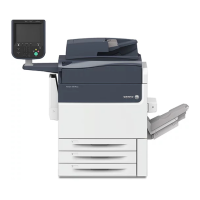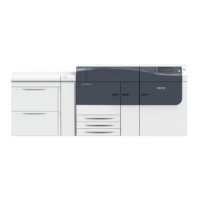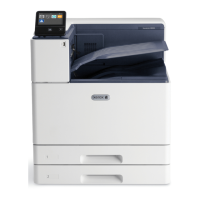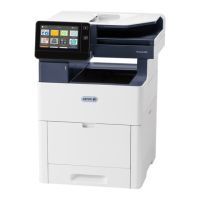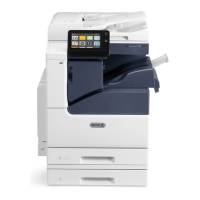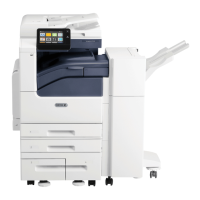• Use the following sequential order when making changes to the paper curl. This ensures that the desired
output is achieved:
Tip: Paper jams and wrinkled output may occur if the change is not performed in the
recommended sequential order; for example, using Default and then skipping to Type C.
Note: Always run test prints every time a setting is changed / selected; this allows you to evaluate the
output and determine if additional changes are necessary.
a. Default
b. Type A
c. Type B
d. Type C
e. Custom Curl Correction: Slight (Very Small) Upward or Slight (Very Small) Downward
f. Custom Curl Correction: Moderate (Small) Upward or Moderate (Small) Downward
g. Custom Curl Correction: Medium Upward or Medium Downward
h. Custom Curl Correction: Severe (Large) Upward or Severe (Large) Downward
• If paper curl continues to persist after trying several or all of these settings, try decreasing the image density
on the print job or use a different type of paper.
• If paper curl is still a problem after you decrease the image density and after you use a different type of
paper, for more information, contact the customer support center.
UNEVEN DENSITY OR MOTTLE
PPrroobblleemm
Uneven Density or Mottle
SSoolluuttiioonnss
1. Perform Adjust Image Transfer.
• Use this feature to adjust the voltage ratio on the secondary bias transfer roll (2
nd
BTR). For heavy-weight
paper, such as 220 g/m
2
or greater, the 2
nd
BTR is where the image is transferred from the belt to the paper.
However, there are times when it is also used with lightweight paper.
• This feature is accessed from Machine Status > Tools > Setup & Adjustment > Custom Paper Settings.
Select the desired Custom Paper > Change Settings > Adjust Image Transfer > Change Settings.
Xerox
®
Versant
®
280 Press User Documentation 299
Troubleshooting

